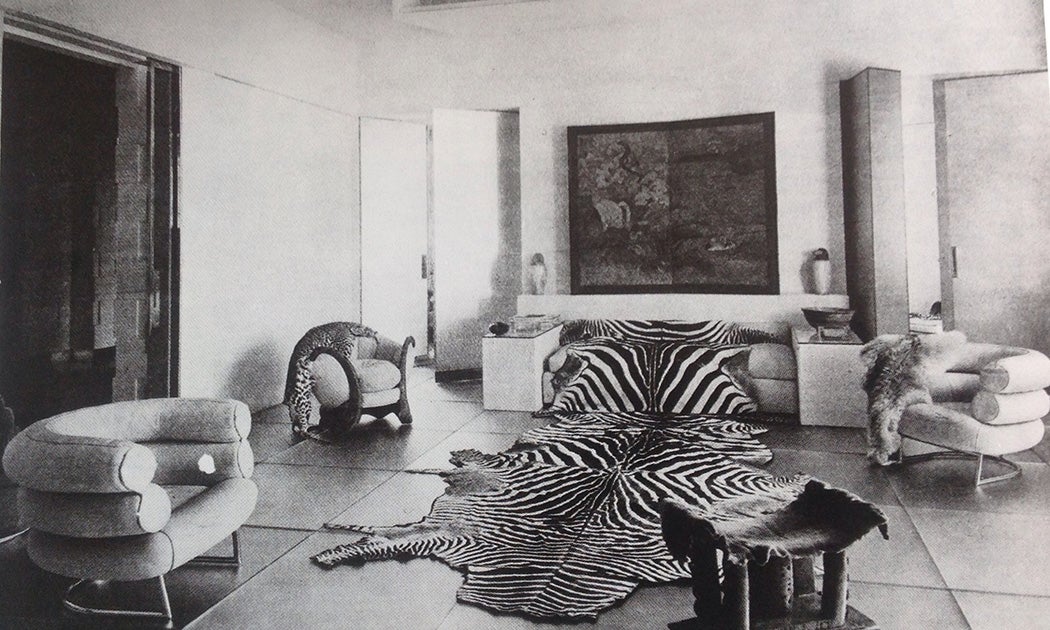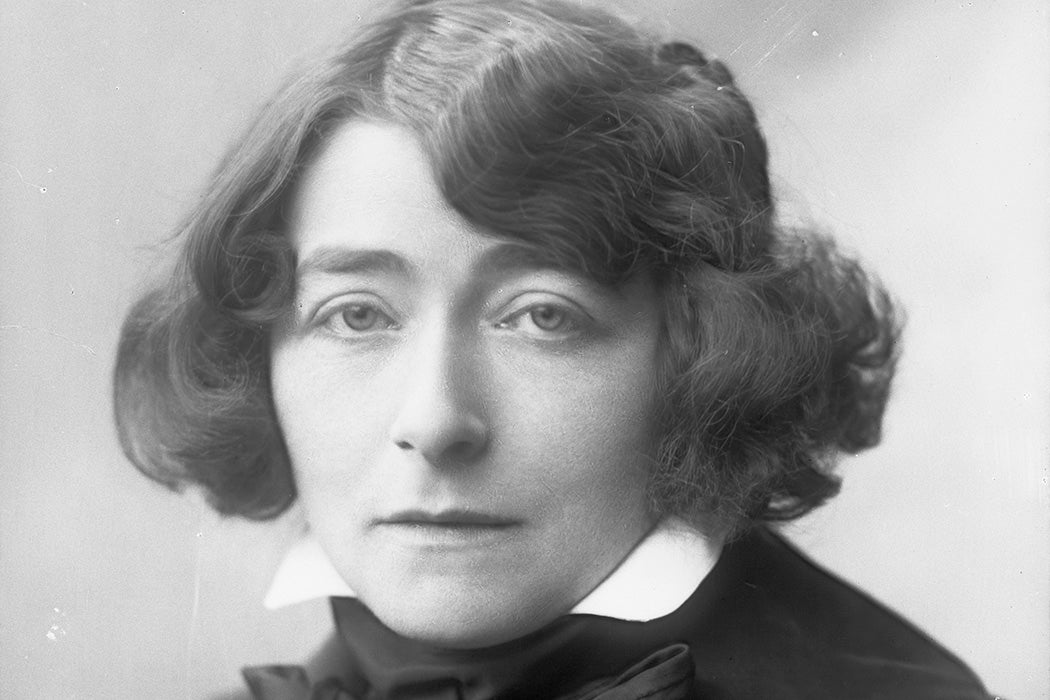The Irish architect and designer Eileen Gray is possibly best known for an act of vandalism. Not an act she perpetrated, but the deliberate defacing of a home she designed by an architect she had admired. Gray’s E-1027, a stunning, white Modernist masterpiece in the south of France, was altered by Le Corbusier in the late 1930s when he decided to paint several murals within the home, going against a design that had been inspired by Le Corbusier’s own Five Points of Architecture. This act forever changed the history of E-1027. Even today, with the reopening of the house to the public in 2021 after a long restoration process, several Le Corbusier murals remain intact.
Our popular knowledge of Eileen Gray tends to focus on this event. Because of the scandal, because it involved Le Corbusier, considered one of the icons of Modern architecture. But Gray was so much more! She was an accomplished architect and designer whose life’s work doesn’t deserve to be defined by Le Corbusier’s boorish actions. As the Irish art critic Dorothy Walker states, Gray was “one of the most remarkable Irishwomen and one of the most remarkable artists of the century.”
Gray’s entrance into the world of architecture was through furniture. She studied the arts in both London and Paris in her twenties. She moved to 21 rue Bonaparte, a Parisian apartment she kept for the rest of her life, in 1906. Around 1906–07 is also when she met and began to study lacquer under Seizo Sugawara, a Japanese lacquer master residing in Paris. She learned from and collaborated with Sugawara for many years. Lacquer came to be the skill set that defined much of her furniture designs.
In 1919, Gray was commissioned to design the interior of the apartment of Madame Mathieu-Lévy, a project that truly marked her arrival as a designer. Patricia O’Reilly describes how, in Gray’s hands,
the apartment became an atmospheric haven, with a muted color scheme and a sculptural use of space. She created screens of lacquered brick, the Dragon chair, sausage-like Bibendum chairs and the Pirogue day bed, resembling a seashell.
The apartment’s new interior received favorable coverage by Harper’s Bazaar the following year.
As her work grew in popularity, Gray received commissions from other wealthy Parisians and decided to open her own shop, Jean Désert, in 1922. Soon she was known as one of France’s top designers, with her popularity growing thanks to domestic and international publications continuing to cover her designs.
Gray began to experiment as an architect in 1923, coinciding with her personal relationship with the writer and architectural critic Jean Badovici. Through him and his social circle, she met architects such as Le Corbusier and J. J. P. Oud. By that point, Gray had become disillusioned with creating one-off luxuries, developing an interest in how mass-production could shape design. Without any formal training in architecture, she completed E-1027 in 1929.

With its simple, rectangular exterior, open floor plan, and horizontal windows, Gray’s design was clearly influenced by Le Corbusier’s work. Yet, Gray also envisioned E-1027, and the furniture she designed for it, as prototypes that could eventually be developed for mass production. Her second built structure, Tempe à Pailla in Menton, France, saw her move away from Le Corbusier’s “machine aesthetic” by incorporating existing historical structures into the design. Unfortunately, her ventures in architecture seemingly stopped there. While records show that she designed more than forty buildings, E-1027 and Tempe à Pailla were the only two that were built.
As curator Jennifer Goff explains, Gray’s “use of media was novel, combining as she did lacquer, chrome, celluloid, plastics, perforated metal and cork in revolutionary fashion.” Her designs were ahead of their time, her mixing of modernity and tradition creating something that felt of the moment but also timeless.
After World War II, Gray fell into obscurity. For a time, some of her architectural designs were credited to others, including Badovici and Le Corbusier. However, toward the end of her life, she saw renewed interest in her work. In 1972, a retrospective was held in London and Le Destin, a four-panel lacquer screen she created in 1914, was purchased at auction by Yves Saint Laurent for $36,000—an incredible sum for a “forgotten” designer. The following year, the Royal Institute of the Architects of Ireland awarded Gray an honorary fellowship at the age of ninety-five. Gray passed away on October 31, 1976, and was laid to rest at Père Lachaise in her chosen home of Paris.
Teaching Tips:
Take a virtual visit to the permanent exhibition on Gray at the National Museum of Ireland.
Read and discuss a 1981 analysis of Gray’s work from the feminist magazine Heresies.







